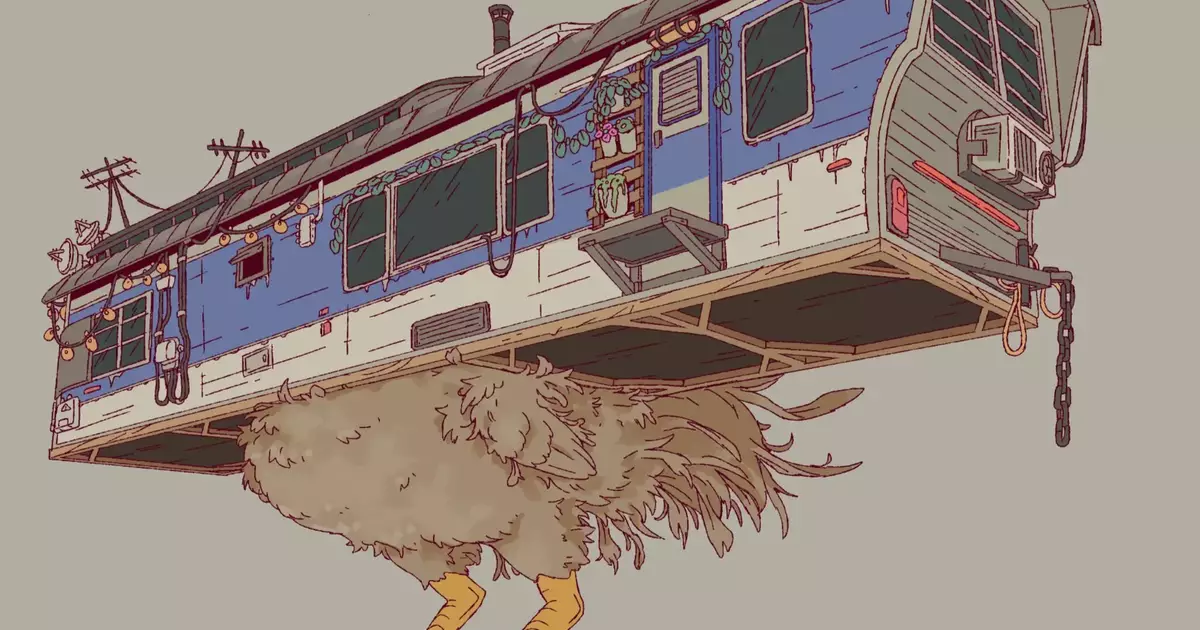What Remains of Edith Finch, the work of Giant Sparrow, captivates players with its poignant tales of a family plagued by misfortune, all set amidst the backdrop of an elaborate treehouse. This highly interactive anthology elicits complex emotions through a diverse array of storytelling techniques, shaking the conventional narrative structure in video games. Gamers transition from lighthearted tasks, such as playfully controlling quirky creatures, to confronting darker themes like sorrow and tragedy, proving that the medium can explore a spectrum of human experiences. This unpredictable fusion of whimsy and melancholy, alongside the tight-knit family narratives, crafts an immersive experience that is as thought-provoking as it is unique.
As we look forward to Giant Sparrow’s upcoming project—tentatively known as “Heron”—the developer seems poised to pursue a similar thematic exploration, expanding upon the tension between humor and darkness. The concept, as shared by founder Ian Dallas, revolves around a field biologist’s whimsical and at times bizarre observations of organic life, setting the stage for an unconventional take on a nature documentary style. This promising premise hints at an exploration of creativity devoid of the restrictive nature documentary format that often leads to superficial portrayals of wildlife.
Dallas has openly described his disappointment with traditional nature documentaries, which he finds to be excessively broad and impersonal in their portrayal of life. This analysis aligns with the growing sentiment that nature documentaries often serve as mere distractions rather than immersive educational experiences. As an alternative, Giant Sparrow is creating a space where players can reflect on the oddities of biology, encouraging deeper contemplation and interaction with the natural world. By rejecting commonplace design choices—like scavenger hunts for mundane items—the studio aims to introduce fantastical creatures, merging elements of reality with imaginative enhancements.
The art presented thus far encapsulates an eclectic mix, featuring everything from ordinary chickens endowed with whimsical traits to bizarre chicken-legged houses. This surreal combination showcases an ambition to unravel the idiosyncrasies of biology in a playful manner. The addition of fanciful aspects suggests a commitment to challenging players’ perceptions of nature while promoting exploration and curiosity, positioning players not merely as passive observers but as active participants in a vivacious ecosystem teeming with life.
Dallas remarks on the conventional constraints of single-player gameplay that often feel predictable and rigid. In stark contrast, Giant Sparrow aims to cultivate a dynamic world that offers genuine unpredictability, much like traversing the vast complexities of nature. The aim is to create gameplay scenarios steeped in creativity and spontaneity, where players could engage intimately with wild creatures rather than driving narratives forward merely by expending limited actions. For instance, coaxing a giraffe to lower its head—a moment both whimsical and profound—imbues the gameplay with layers of excitement and uncertainty.
Simultaneously, his exploration of creatures has also opened channels connecting horror and fascination. The unflinchingly strange aspects of animal life, such as the peculiar mating rituals of butterflies, showcase nature’s inherent oddity that can evoke both revulsion and intrigue. By inviting players into such uniquely bizarre scenarios, Giant Sparrow aspires to provide a visceral experience that fosters a closer relationship with the organic world.
Curiosity and Open-Ended Questions
As the developers chart new terrains in narrative design, many intricate questions arise about the portrayal of nonhuman agents within the game. How will the animals’ interactions with the player be structured? Will their representation lean toward passivity, or will players engage in meaningful exchanges that catalyze actions and narrative progression? Furthermore, what light will the game shed on biology as a discipline? This sense of inquiry evokes echoes of speculative fiction, reminiscent of Jeff VanderMeer’s New Weird genre, which similarly interrogates the boundaries of reality and imagination.
Giant Sparrow’s “Heron” promises to tread unfamiliar ground, contemplating the relationships between players and the eccentricities of the world around them. This blend of experience encapsulated in the studio’s ambitious vision not only seeks to entertain but also stimulates a thoughtful examination of existence itself—a key feature that could redefine narrative experiences in gaming.
In summation, as we await the arrival of Giant Sparrow’s new adventure, the anticipation builds around an engaging exploration that promises a playful, if surreal, examination of the living world. Balancing the thin line between whimsy and discomfort might just cultivate a new understanding of life as we know it.


Leave a Reply
You must be logged in to post a comment.